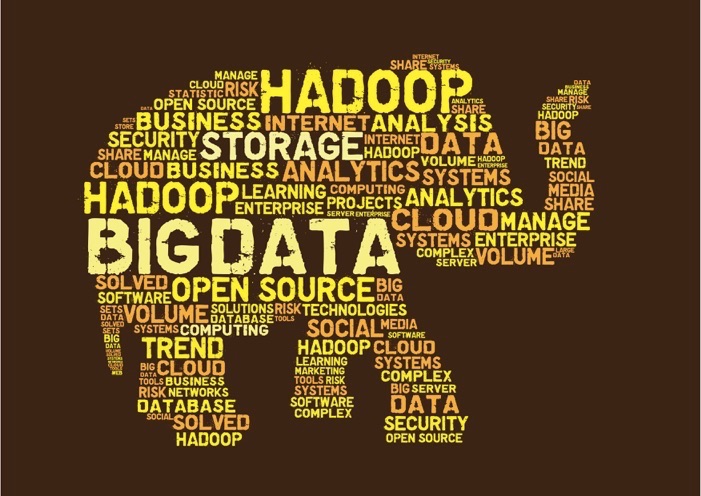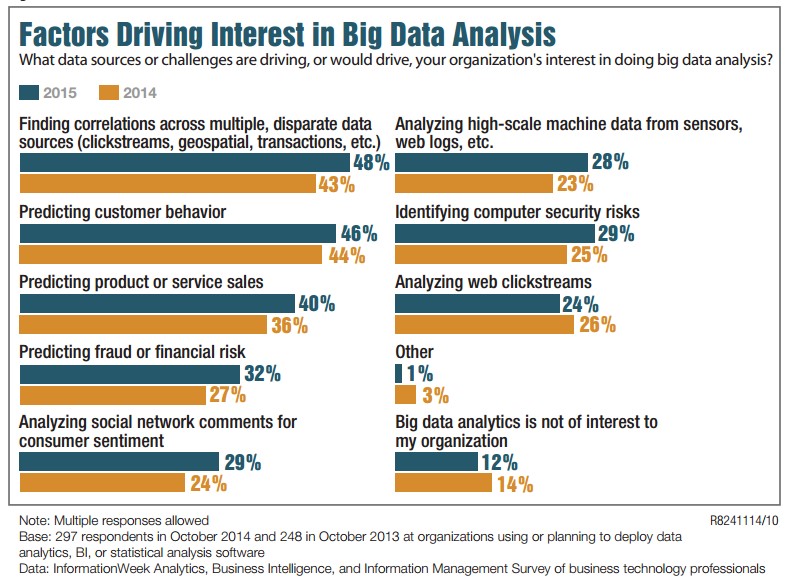When it comes to better understanding your customers, you likely leverage every possible resource from personas to mapping the customer experience journey. For marketers, big data is a boon – it's a gold mine of information that, to be sure, requires a bit of digging through the dirt to get to the real treasure.
Big data has been used to tout everything from customer sentiment to fraud prediction. By letting computers do what they do best, it is believed that crunching all that information can lead to some pretty significant correlations – between click streams, geographic location, and even transactional data. Tying it all together helps bring the customer service lens into even greater focus.
With that being said, however, relying too much on big data has its drawbacks. Beyond the fact that we're just starting to understand what's out there and how it's all relatable, big data should not be looked at as a marketing or customer service panacea. In fact, there are a lot of areas where relying too much on big data to better understand your customers can have the opposite effect, like these:
Lack of Availability
Let's say you're shopping online for a new pair of shoes. You're scrolling through pair after pair on your cell phone until you find the perfect pair. Unfortunately, they're backordered. You want to be notified when more are in stock, but you're not sure how to do that. You tap for customer service. You're invited to type in your question and see a list of canned solutions. That's a bit too cumbersome so you look for a way to contact a representative.
Instead, you're asked to submit your question to a helpdesk or online community. Trying to fill out a trouble ticket, you see that the service isn't compatible with mobile. You give up in frustration. Shortly thereafter, you get an email reminding you about the item you were interested in, and asking how the company can do better.
If you're visualizing a cartoonish response of steam coming out of your ears from anger and frustration, now you can imagine the limitations that big data has. Perhaps the only retailer to truly get a handle on big data at this level is Amazon, and they've been able to integrate unimaginable reams of data seamlessly while being able to grow and scale their company with consistency.

When the service you need isn't available, you grit your teeth for long wait times ahead, and test your patience with the poor rep that has to look up the details of the backordered product in a sea of potential choices. The point is, Big Data shouldn't just be pored over by analytics experts, but made available to everyone at every tier in the organization.
Rush to Judgment and Unrealistic Expectations
Big data is the foundation of a perilously-positioned scale. On one end, you have the camp that's rigid and inflexible. Things have always been done a certain way, and the deluge of big data isn't going to change that. These companies risk getting outmaneuvered by their more proactive competitors. They make hasty decisions that may not always be backed by data science, and then backpedal when things go south.
At the opposite end, there are those who are positively drowning in analytics. They're so swallowed up by data that they hesitate to make any decision without consulting the numbers like some kind of oracle. They shrug off their “gut feelings” or intuition because the data doesn't account for that.
There's no doubt that big data is changing the way we market, but as many industry trends go, it can easily be blown out of proportion into something it's not. People are complex, self-serving, habitual, ever-changing creatures. Trying to make sense of that is not something that can be done overnight. It requires careful planning, an understanding of the different “pools” of information the data is drawing from, and one's own understanding of their target market to fully grasp.
Otherwise you end up with complex, complicated decisions that are impossible to predict and frustrating to implement.
Data Modeling Difficulties
In order to get the most out of big data, it has to be modeled in order to bring the value it's so often associated with to customer service, which in turn trickles down to the customer. At its core, Big Data is raw, unfiltered and largely noise. It's not structured, organized or clean. The only system currently out there with the power to tackle such large scale information is Hadoop, which has been around since the early 2000s.

Currently there is no user friendly, on-demand and easily implementable enterprise data modeling system. There are many ways to tackle the big data noise, however, but many data models hit common obstacles including not being able to scale accordingly or organize the data in a sensible way, and still fewer work with existing analytics platforms and CRM information.
Just having the data is no longer enough. Making it accessible and understandable to everyone is the challenge today's modeling apps have to fix.
Pure Complexity
And finally, let's face it, we're only beginning to scratch the surface of what's out there. And yet it keeps growing and growing. Costs go down, availability of information goes up. Despite all its lucrative potential, big data can't replace people. When insights are gleaned from data scientists, they're passed on to managers and then employees. If there's not a process in place to better understand and leverage the information you continue to gain, it's practically worthless.
The bottom line with using big data to better understand your customers is that there's a lot of expectations of what it can or cannot do. With such a wave looming overhead, it's easy to want to stand back and wait. But just as the internet itself was once looked at as being “just a fad”, so too is big data poised to completely change what we know about our audience.
Being able to turn this information into insight is a challenge – but one worth tackling. We all know what happens when there's a rush to implement without a goal in mind. Knowing the issues ahead of time can help you plan out a strategy that takes all of these points into consideration as you all work together toward a common goal – making sure every customer is exceedingly satisfied, again and again.
What are Your Thoughts on Using Big Data to Better Understand Customers?
Do you think big data is still in its infancy with regard to its use in customer analytics? Or do you think we simply lack the tools and understanding to make the most of it? What tools are you currently using to make sense of the data you collect? Share your thoughts and comments with us below.
About the Author: Sherice Jacob helps business owners improve website design and increase conversion rates through compelling copywriting, user-friendly design and smart analytics analysis. Learn more at iElectrify.com and download your free web copy tune-up and conversion checklist today!

Walang komento:
Mag-post ng isang Komento